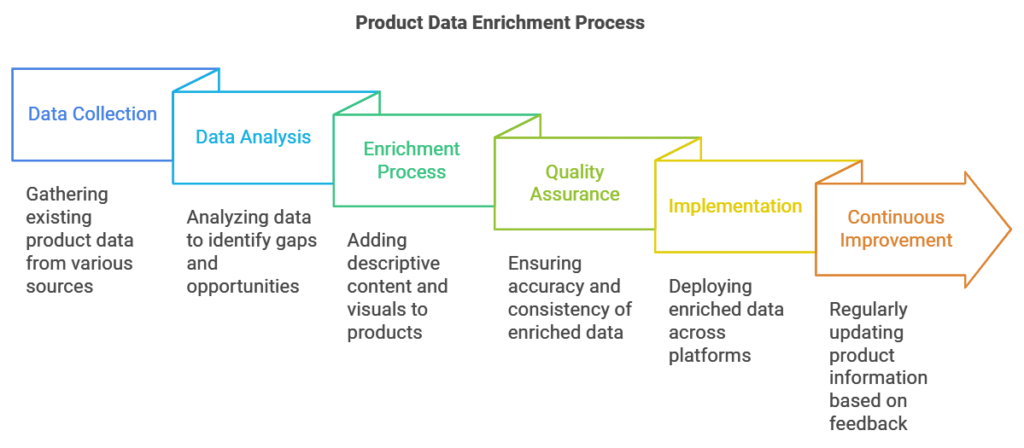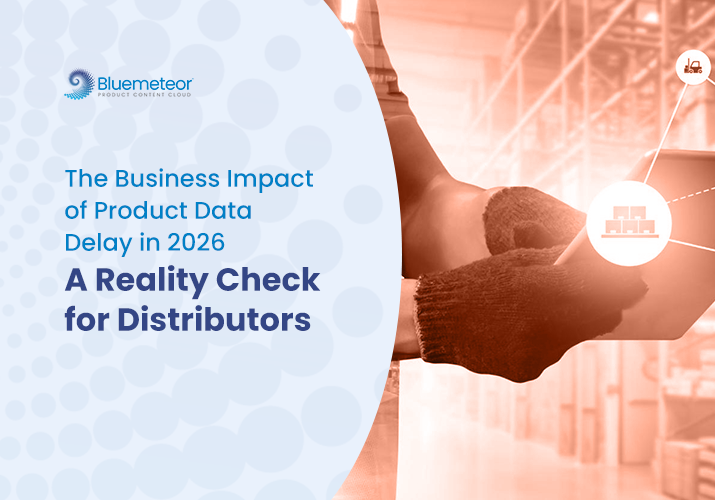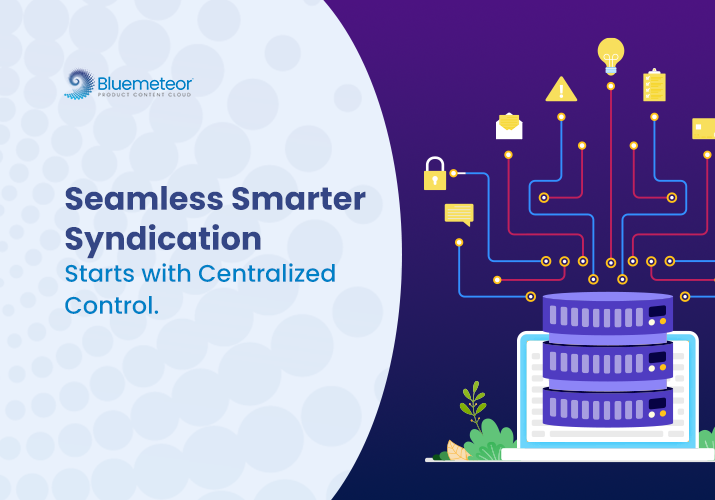From “Eh” to “Wow”: How Product Data Enrichment Tool Can Enhance Customer Experience

A product data enrichment tool significantly enhances and organizes product information. It achieves this by adding detailed attributes, rich descriptions, and high-quality visuals. As a result, you ensure accurate, engaging, and optimized content for seamless multichannel performance.
In today’s hyper-competitive digital landscape, customer experience has become a make-or-break factor for businesses. Companies no longer compete solely on price, product variety, or quality. Instead, they are racing to deliver superior shopping experiences that meet customer expectations at every touchpoint.
One often overlooked part of this experience is the product data. Indeed, how you present your product information can be the deciding factor. It can mean the difference between gaining or losing a customer.
This is where product data enrichment tools come in, turning basic, incomplete product data into rich, detailed, engaging, and accurate product descriptions that capture customer’s attention.
Imagine visiting a product page that’s missing images, unclear specifications, or lacks detailed descriptions. Chances are, you’d likely exit the page and search for an alternative, right? That’s the “eh” moment you want to avoid as a retailer.
But when product data is enriched — when it’s clear, detailed, and engaging — it transforms that “eh” into a “wow” moment for customers, increasing the likelihood of conversion.
But how exactly does product data enrichment work?
And why is it so important?
In this blog, we will walk you through the ins and outs of product data enrichment, offering techniques, best practices, and common pitfalls to avoid. We will also discuss how tools like Bluemeteor’s Product Content Cloud can revolutionize your approach to product data.
What is product data enrichment?
Product data enrichment refers to the process of enhancing and refining your product information to ensure it is accurate, comprehensive, and valuable.
The Value of Enriched Data
Enriched data doesn’t just inform—it engages and guides customers through the purchasing process, reducing hesitation and increasing satisfaction.
Elements of Product Data Enrichment
This often involves updating descriptions, adding high-quality images, including specifications, and integrating user-generated content like reviews. The goal is to create a rich product profile that provides potential customers with all the information they need to make an informed purchase decision.
Impact of Product Data Enrichment
To better understand the impact of product data enrichment, let’s compare how a basic product listing transforms into a comprehensive, informative, and engaging profile for an electrical product. Let’s understand the process in the following table:
| Attribute | Before Enrichment | After Enrichment |
|---|---|---|
| Product Name | 1200W LED Floodlight | 1200W LED Floodlight, Outdoor Waterproof, Energy Efficient |
| Brand | XYZ Lighting | XYZ Lighting Co. |
| Product ID/SKU | XYZ-LED-1200 | XYZ-LED-1200 (Model: XLF-1200) |
| Price | $59.99 | $59.99 |
| Quantity | 150 units | 150 units, Limited Availability for Spring Sale |
| Material | Aluminum | Aluminum, Frosted Glass |
| Power Rating | 1200W | 1200W, Energy-Efficient, A++ Rated |
| Voltage | 110V | 110V – 240V (Universal Voltage) |
| Certifications | None | CE, UL, RoHS Compliance, IP65 Waterproof Rating |
| Warranty | N/A | 2-Year Manufacturer Warranty |
| Dimensions | N/A | 20 x 10 x 10 cm |
| Weight | N/A | 2.5 kg |
| Color | N/A | White, Black, Silver |
| Energy Efficiency | N/A | A++ (Energy-Efficient, Low Power Consumption) |
| Safety Features | N/A | Overvoltage Protection, Short Circuit Protection |
| Country of Manufacture | N/A | Manufactured in the USA |
| Customer Rating | N/A | 4.5/5 (Based on 120 Reviews) |
| Product Description | None | Ideal for gardens and parking lots, durable, and energy-efficient LED light |
| Stock Availability | 150 units | 150 units, Limited Availability for Spring Sale |
| Shipping Information | N/A | Free Shipping, Delivered in 5-7 Days |
| Return Policy | N/A | 30-Day Free Returns, Free Return Shipping |
| Compatibility | N/A | Compatible with Smart Home Systems, Dimmable with compatible switch |
| Installation Instructions | None | Easy to Install, Instruction Manual Available for Download |
| Customer Reviews | None | 4.5/5 (120 reviews), “Perfect for outdoor lighting, easy to install” |
| Product Images | None | High-Resolution image of the product from multiple angles |
| Videos | None | 1-minute installation and product demo video |
| 3D Models | None | Interactive 3D model for virtual inspection |
| 360° View | None | Interactive 360° rotating product view |
| Infographics | None | |
| Social Proof | N/A | Customer reviews in video format or social media links showcasing user experiences |
How Product Data Enrichment Transforms the Customer Experience
Let’s explore the key-ways enriched data can create a seamless, personalized, and more engaging shopping experience for your customers.
- Enhanced product information – Enriched product data provides customers with comprehensive and detailed information, such as features, dimensions, and usage guidelines. This helps customers make quicker and more informed purchasing decisions by eliminating doubt and uncertainty.
- Improved search and discovery – Accurate, well-structured, and enriched product data ensures that search algorithms return the most relevant results, allowing customers to find exactly what they are looking for, reducing frustration, and improving overall satisfaction.
- Personalized recommendations – By leveraging enriched data, retailers can offer personalized product recommendations that align with customers preferences, enhancing customer satisfaction and increasing the likelihood of repeat purchases, fostering customer loyalty.
- Consistent omnichannel experience – Enriched and standardized product information ensures consistency across various channels (online, in-store, mobile apps). Customers will enjoy a seamless and cohesive experience.
- Building brand trust – Customers trust brands that provide accurate, detailed, and transparent product information. Misleading or incomplete data can quickly damage a brand’s credibility. With enriched product data, you can ensure your product details are accurate and up to date always.

Common Mistakes to Avoid When Implementing Product Data Enrichment
Neglecting data quality checks
Skipping data quality assessments before enrichment can result in poor-quality, inaccurate data. To avoid this, always conduct a thorough data audit. Identify and clean duplicate, incomplete, or erroneous data entries.
Overlooking standardization and normalization
Failing to standardize product data from various sources can make it difficult to compare and enrich data effectively. Therefore, establish uniform data formats and naming conventions. Also, normalize units of measurement and terminology before beginning the enrichment process.
Insufficient data governance
Without clear data management policies and assigned roles, enrichment efforts can suffer from inconsistencies, errors, and data silos. To prevent this, define solid data governance policies. Assign clear roles to ensure ongoing data integrity, accuracy, and consistency.
Ignoring automation opportunities
Relying solely on manual processes for data enrichment is time-consuming and prone to human error. To improve efficiency, leverage automation tools and AI-driven technologies. These tools streamline monotonous tasks, such as data categorization and consistency checks.
Lack of integration with other systems
Treating the PIM system as isolated can lead to incomplete enrichment and missed opportunities. To avoid this, integrate your PIM with key systems such as ERP, CRM, and e-commerce platforms. This ensures data is leveraged from a broader range of sources, providing a more comprehensive enrichment process.
Benefits of product data enrichment tools for distributors, and retailers
| Features | Benefit to Distributors, and Retailers |
|---|---|
| Standardization of Data | Converts diverse supplier formats into a consistent structure. |
| Enhanced Product Descriptions | Fills gaps and improves descriptions, ensuring accurate and appealing product information. |
| Improved Data Quality | Removes duplicates, errors, and inconsistencies in data. |
| Automated Categorization | Maps products to predefined categories, enabling better organization and intuitive catalogs. |
| Integration with Marketing Platforms | Enriches data with images, SEO keywords, and marketing-friendly descriptions for ecommerce and promotions. |
| Accelerates Product Onboarding | Reduces manual effort and speeds up the process of adding new products to the catalog. |
| Supports Regulatory Compliance | Ensures inclusion of certifications and compliance details, reducing legal or operational risks. |
| Enables Advanced Search & Filtering | Adds metadata and tags for enhanced product searchability and filtering by customers. |
| Facilitates Data Syndication | Prepares enriched data for consistent use across multiple sales channels and platforms. |
| Improved Customer Experience | Provides complete, clear, and reliable product information, improving trust and purchase decisions. |
Choosing the Right Product Data Enrichment Tool
When selecting a product data enrichment tool, it’s essential to consider the following key features:
- Data Quality and Accuracy: The primary purpose of a data enrichment tool is to enhance the quality of your product data. It is essential to choose a tool that provides accurate, reliable, and up-to-date information
- Integration Capabilities: Ensure the tool can easily integrate with your existing systems and platforms such as eCommerce platforms, CRM software, legacy PIM, and ERP systems etc.
- Scalability and Performance: Choose a solution that should handle increasing volumes of data without compromising performance. Assess the tool’s capacity to process large datasets efficiently and its speed in delivering enriched data.
- User-Friendly Interface: A tool that is easy to use will facilitate smoother adoption across your team.
- Advance Automation Capabilities: Choose a tool with advanced automation for product data enrichment that automates data cleansing and updates, ensuring accurate product information with minimal manual effort.
- Data Security and Compliance: Protecting your data is paramount. Ensure the tool you choose adheres to stringent data security standards and compliance regulations.
- Reporting and Analytics Features: Robust analytics capabilities can help you measure the effectiveness of your enrichment efforts.
By carefully considering these factors, you can choose a product data enrichment tool that not only meets your current needs but also supports your future growth and operational efficiency.
Why Bluemeteor is the Top Choice for Product Data Enrichment
Bluemeteor Product Content Cloud is often regarded as a top choice for product data enrichment for businesses of all sizes because of its comprehensive and flexible features. Here’s why it stands out:
- Centralized Management: Simplifies product data organization and updates across channels.
- AI-Driven Enrichment: Enhances product data quality with automation and custom attributes.
- Scalability: Supports thousands to millions of product data including digital assets without performance degradation..
- Rich Media Support: Handles images, videos, and documents for dynamic product listings.
Its flexibility and efficiency make it a powerful choice for optimizing product data.
Takeaway!
By avoiding these pitfalls and adopting product data enrichment, your business can deliver standout customer experiences that drive loyalty, increase conversions, and fuel growth. With Bluemeteor’s Product Content Cloud, you can streamline the process and unlock the full potential of your product data.
No matter the industry, product data enrichment is no longer just a nice-to-have—it’s a must-have for any business looking to stay competitive and deliver exceptional value.
So, are you ready to turn “eh” into “wow”?
Get started today and see how enriched product data can transform your customer experience!




